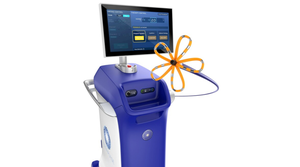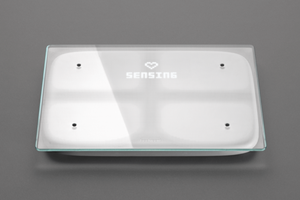One-Way Valve Improves Venting Control During Surgery
September 3, 2002
Originally Published MPMN September 2002
PROFILE
One-Way Valve Improves Venting Control During Surgery
An adjustment knob maintains the proper amount of negative pressure
|
An adjustable one-way vent valve developed by 3-T and Geneva Medical Products prevents the accumulation of high blow-off pressure. |
One-way vent valves play a crucial role during open-heart surgery by redirecting blood from the heart to a heart-lung machine. The duckbill valve must prevent reverse flow and airflow back to the heart, which could cause an embolism. Chet Czaplicka, a partner at medical device OEM 3-T (Dearborn, MI), identified flaws in the design of existing valves during his years spent as a perfusionist. He vowed to build a better valve at 3-T and enlisted the help of Geneva Medical Products (Walworth, WI; www.genevamedical.com), a supplier of thermoplastic medical products, to develop a safer, more-efficient one-way vent valve.
Czaplicka lists three primary concerns in traditional vent-valve designs: an unreliable mechanism to control negative pressure, the presence of high blow-off pressure, and inefficiencies in the prevention of canula occlusion.
To improve control over the fluid and airflow entering the valve, an adjustment knob has been incorporated into the 3-T valve. When the knob is screwed shut, the venting function of the valve is at its minimum, thus maximizing fluid flow. The ratio is slowly reversed as the knob is turned. Flow control in many other valves of this type is typically a function of the user placing his or her thumb over the air vent. This method is less reliable than turning a knob, explains Czaplicka, and it requires considerable dexterity to modulate the flow.
The adjustment knob serves a secondary function in the prevention of cannula obstruction. Surgery can be interrupted when the drainage cannula comes into contact with the wall of the heart or aorta and becomes occluded. To resume drainage, the surgeon must interrupt the operation and reposition the cannula. With the 3-T valve, the perfusionist simply pushes the adjustment button to free the cannula, allowing the surgeon to concentrate on the task at hand.
Controlled Venting
Other valve designs may also foster a buildup of positive pressure between the valve outlet and the pump. "One-way vent valves must vent, or blow off, positive pressure," says Czaplicka. "If it is excessive, it can collapse the valve, allowing reverse airflow to the heart." To remedy this problem, the 3-T device has an umbrella valve beneath the duckbill valve. This design maintains a blow-off pressure two to three times lower than competitive products, according to the firm.
Czaplicka chose Geneva Medical Products as a partner in the project because of its expertise in the design, development, and manufacture of valves. The company has more than 30 years of experience in the manufacture of medical thermoplastic components and assemblies.
In addition to design assistance, the firm provided the tooling and prototyping, manufacturing, and validation services. To accelerate the development process and minimize tooling modifications, Geneva Medical Products used 3-D modeling and Gantt charts to keep the project on track. The company also ran a battery of tests on the product, including open inflow vacuum differential, occluded inflow vacuum relief, flow-rate and vacuum-level variation, and retrograde flow testing.
The 3-T valve is constructed of a clear plastic that allows the surgeon and perfusion personnel to view its status at all times. The material meets USP Class VI requirements.
3-T was founded in 1995 and provides medical tubing guides, suture guides, vein graft cannulae, myocardial temperature probes, and vent valves. The firm continues to collaborate with Geneva Medical Products to enhance its product line. Current projects include a blood reservoir for autotransfusion and a blood filter for person-to-person transfusion.
Copyright ©2002 Medical Product Manufacturing News
You May Also Like



